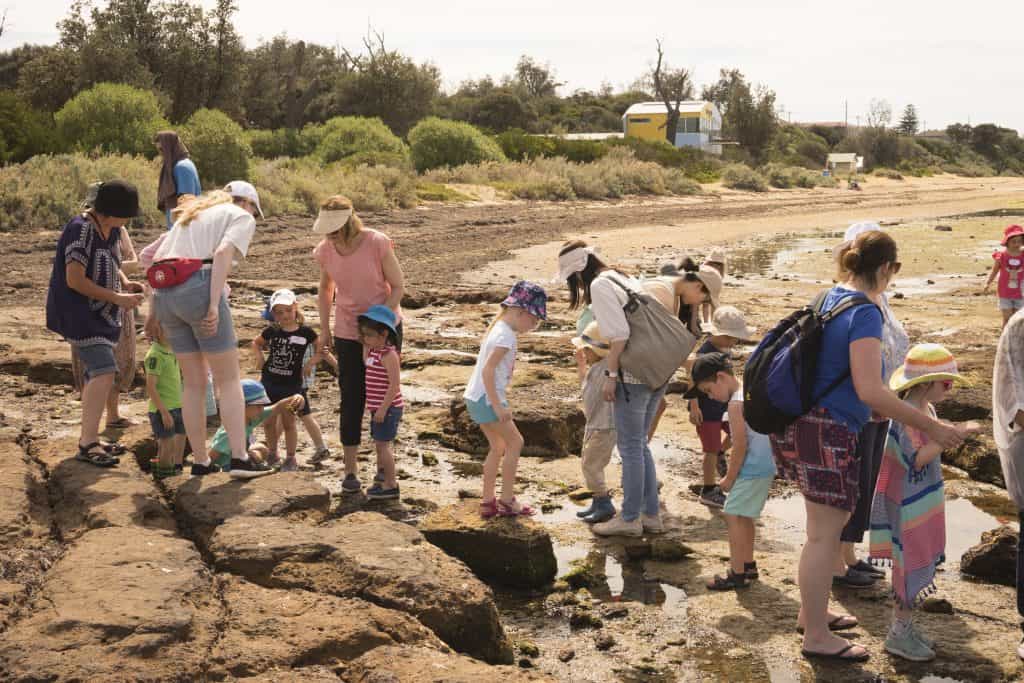Beach Secrets
-
Living Things
-
Human impacts
-
Creature features
-
Habitats
Excursion Program Overview
Investigate the beautiful Ricketts Point Marine Sanctuary with all of your senses! Feel the sand between your fingers as we explore the sandy shores for marine treasures. Peek into the clear pools of the rock platform to uncover the fascinating creatures seeking shelter at low-tide. Discover the special secrets of marine habitats through play-based activities that allow you to listen to the sounds of the sea, touch ocean treasures and pretend to be your favourite sea creature.
Your program includes:
Rockpool Ramble
Through-hands on investigation of the rock platform, children will uncover the creatures that make this special place their home.
Sandy Shore Discovery
Children are taken on a journey along the sandy shores of the sanctuary to discover fascinating treasures washed ashore by the waves.
Play-based marine activities
By participating in play-based activities including Trash or Treasure, Floating or Sinking, Shell Discovery and Beach Treasures Match, children will uncover more special secrets of the marine sanctuary and gain an understanding of how we can protect these unique habitats.
Certificate and Conservation Code to reinforce learnings
Post event, kindergartens will be issued a Certificate of Participation and Conservation Code for each class which students are encouraged to sign and hang in the classroom as a reminder of their learnings and their commitment to protect the environment.
We encourage kindergartens to connect with us a few weeks or months after the program to share behaviour changes made by the students or activities undertaken as a result of their learnings during the excursion so we can share success stories to inspire others, monitor the ongoing impact of our programs and make relevant updates or changes if required.
Duration: We recommend 1 hour and 30 minutes with a 15 minute break halfway through.
Restrictions: The program is tide dependent and runs in Term 1 and 4 only. There is maximum of 25 children per group. Adults are free of charge and we suggest a ratio of one adult for every three children to aid supervision. No younger siblings please.
Equipment needed: Appropriate clothing and footwear (long sleeve top, long pants, jacket, hat/beanie, soft-soled shoes e.g. runners). Students will need to bring a snack and water.
Victorian Early Years Learning and Development Framework Links:
Outcome 2: Children are connected with and contribute to their world (Community).
· Children become socially responsible and show respect for the environment
Outcome 4: Children are confident and involved learners (Learning).
· Children develop dispositions for learning such as curiosity, cooperation, confidence, creativity, commitment, enthusiasm, persistence, imagination and reflexivity
· Children develop a range of skills and processes such as problem solving, enquiry, experimentation, hypothesising, researching and investigating
· Children transfer and adapt what they have learned from one context to another
· Children resource their own learning through connecting with people, place, technologies and natural and processed materials
Outcome 5: Children are effective communicators (Communication).
· Children interact verbally and non-verbally with others for a range of purposes
· Children express ideas and make meaning using a range of media

